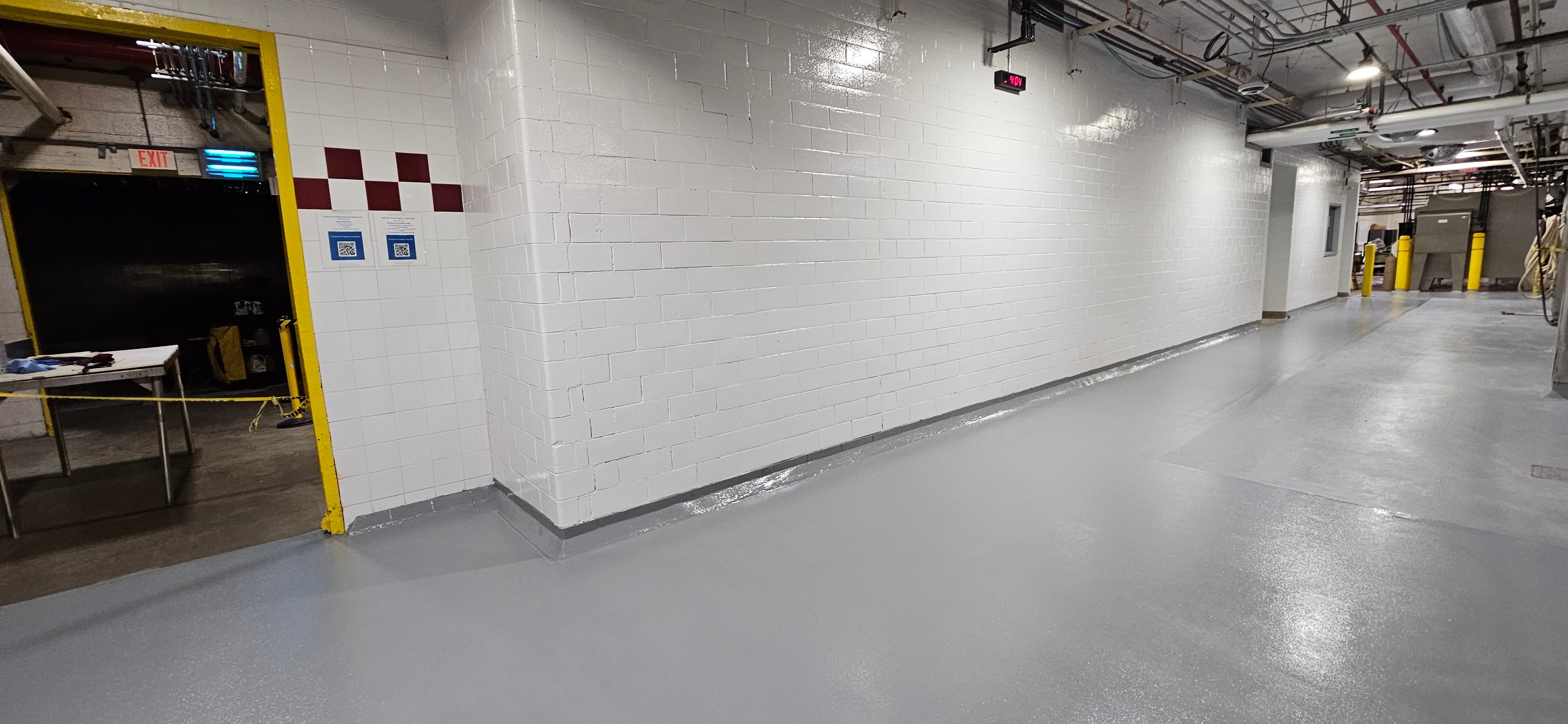Flooring That Supports Cannabis Cultivation: What to Look For
July 16th, 2025
3 min read
By Tom Dassie

In a cannabis cultivation facility, flooring is more than just something to walk on—it’s part of the ecosystem that supports healthy plant growth, cleanliness, and compliance. The wrong flooring can lead to major issues like mold, surface failure, or contamination. The right flooring creates a solid foundation for daily operations, safety, and regulatory success.
At CustomCrete, we’ve helped cultivation facilities across the Midwest implement flooring systems that meet strict hygiene standards while holding up to daily operational demands. With experience across grow rooms, drying areas, and packaging zones, we understand what it takes to get flooring right in these highly regulated environments.
In this blog, we’ll walk through the key factors to consider when selecting flooring for cannabis cultivation, so you can make a confident, informed decision for your grow facility.
Why Flooring Matters in a Cannabis Cultivation Facility
Cannabis grow rooms and production areas experience unique environmental challenges. High humidity, constant cleaning, chemical exposure, and heavy foot or cart traffic all place stress on your floor.
Floors in these settings must do more than look good. They need to:
- Resist moisture and water damage
- Support sanitization routines
- Withstand exposure to fertilizers and cleaning agents
- Handle temperature swings and HVAC condensation
- Be non-porous to prevent microbial growth
- Maintain slip resistance in wet conditions
Any cracks, joints, or unsealed areas can harbor contaminants and become a liability—both from a health and compliance standpoint. That’s why the cannabis cultivation facility floor you choose should be purpose-built for performance and longevity.
Key Features to Look for in Cannabis Facility Flooring
When evaluating flooring systems for your grow facility, here are the essential traits to prioritize:
1. Chemical Resistance
Cleaning solutions, pesticides, and nutrients can wear down traditional floors over time. Your flooring system should resist these chemicals without softening, staining, or degrading.
2. Moisture Resistance
Grow rooms generate a lot of moisture—between irrigation systems, air handling equipment, and cleaning routines. Look for seamless, non-porous floors that won’t absorb water or allow mold to grow.
3. Durability
Rolling carts, buckets, trays, and forklifts (in larger spaces) require a floor that can handle mechanical stress. Resinous coatings like urethane cement or epoxy are built for high performance in demanding environments.
4. Easy to Clean
Cannabis cultivation requires strict cleanliness. A floor that is smooth, seamless, and resistant to buildup makes cleaning faster and more effective.
5. Slip Resistance
Wet floors are a common hazard in cultivation areas. Floors should be textured just enough to provide grip without making cleaning harder or affecting the flow of foot and cart traffic.
6. Antimicrobial Options
Some urethane flooring systems offer built-in antimicrobial properties. These can provide an extra layer of defense against bacteria and fungi—especially helpful in trimming, drying, and packaging areas.
Best Flooring Types for Cannabis Cultivation Facilities
Several flooring options meet the criteria above, but not all are created equal. Here are some of the most effective solutions:
Urethane Cement
- Best For: Grow rooms, processing areas, drying rooms
- Why It Works: Urethane cement is thermal shock resistant, highly durable, and impervious to moisture. It holds up to temperature swings and frequent sanitation, making it ideal for grow environments.
Epoxy Coatings
- Best For: Hallways, packaging rooms, staff zones
- Why It Works: Epoxy offers good chemical resistance and a seamless finish. It’s a great mid-range option for areas with moderate exposure and foot traffic.
Polyurethane Topcoats
- Best For: Enhancing epoxy or urethane systems
- Why It Works: Polyurethane coatings add abrasion and UV resistance. They’re especially useful in areas with natural light or where aesthetics matter more (like visitor entry points or offices).
Areas Within the Facility Have Different Needs
A smart cannabis cultivation facility design will address different performance needs across zones:
- Grow Rooms: High humidity, wet floors, and temperature changes call for seamless, antimicrobial, and slip-resistant floors.
- Trimming & Processing: Hygiene and durability are key; smooth, chemical-resistant floors that are easy to clean work best.
- Drying & Curing Rooms: Moderate humidity and cleanliness matter here. A dense, low-maintenance floor ensures easy upkeep.
- Packaging & Shipping: Durability and impact resistance are important, especially for forklift-friendly zones.
- Hallways & Common Areas: These benefit from polished or coated finishes that are more aesthetic, but still easy to clean.
A tailored flooring system across each of these areas helps your facility stay compliant, efficient, and safe.
Avoid These Common Mistakes
Choosing the wrong floor can lead to major setbacks. Here are a few pitfalls to avoid:
- Installing porous concrete or tile: These absorb water and promote microbial growth.
- Overlooking slope and drainage: Water pooling can lead to mold and mildew.
- Using residential-grade products: These don’t meet commercial durability or sanitization standards.
- Skipping surface prep: No matter how good the coating, poor prep leads to premature failure.
Working with a contractor who understands the nuances of cannabis cultivation facility needs will save time, money, and regulatory headaches down the line.
Final Thoughts: Build from the Ground Up
When it comes to cannabis cultivation, your flooring is a critical part of your operational success. The right system enhances hygiene, streamlines maintenance, and holds up under the pressures of your daily workflow.
A flooring choice might seem small compared to lighting, HVAC, or irrigation—but it plays a major role in your facility’s safety, compliance, and long-term durability. Investing in a high-quality, well-installed floor is one of the smartest decisions you can make for your cultivation business.
If you're ready to start, request a quote from CustomCrete.












.jpg?width=2048&height=1365&name=CC103622%20(2).jpg)
.jpg?width=1200&height=1600&name=Copy%20of%20IMG_1457%20(1).jpg)











